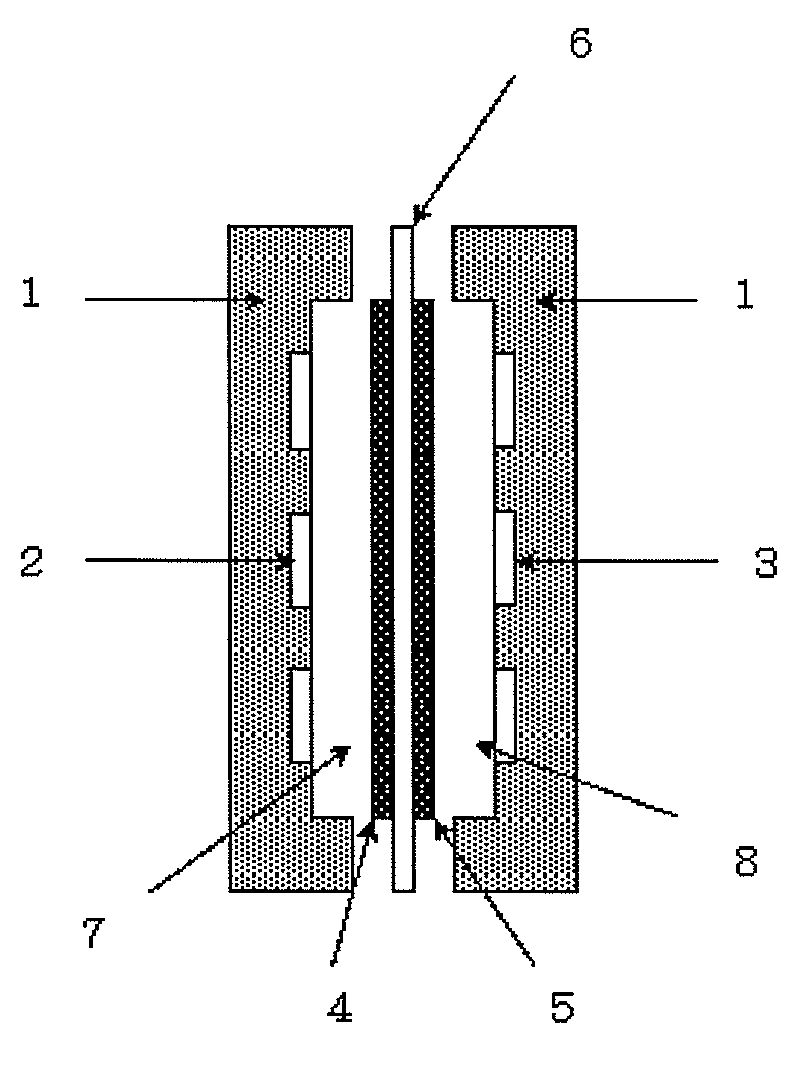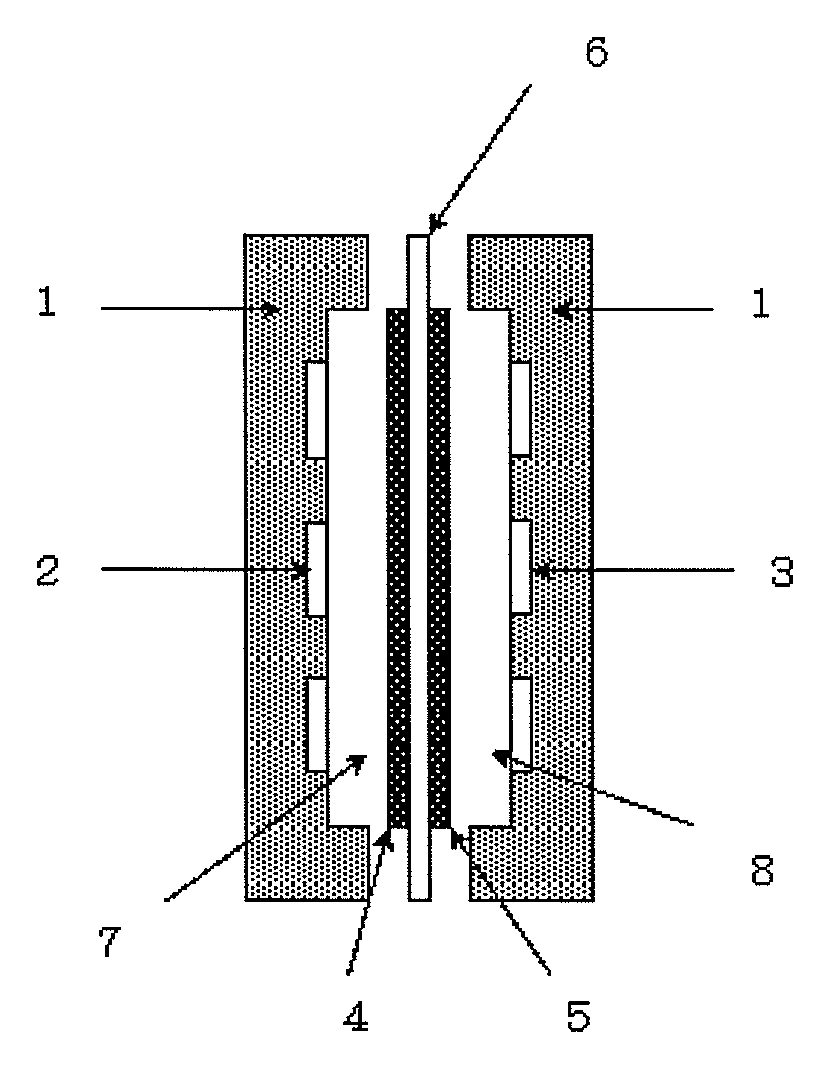Power generation system using an alkaline fuel cell and fuel gas for alkaline fuel cells used in the system
a technology of power generation system and fuel gas, which is applied in the direction of fuel cell details, electrochemical generators, aqueous electrolyte fuel cells, etc., can solve the problems of not being able to use expensive noble metal catalysts and their actual output is not as high as expected even when using hydrogen gas, so as to improve ion conductivity, increase hydroxy-ion concentration, and increase output
- Summary
- Abstract
- Description
- Claims
- Application Information
AI Technical Summary
Benefits of technology
Problems solved by technology
Method used
Image
Examples
examples
[0068]Hereinafter, the present invention will be explained further in detail by using examples, but the present invention is not limited to these examples. Note that operating characteristics of fuel cells in Examples and Comparative Examples are as follows.
[0069]1) Measurements of Concentration of Basic Compound in Hydrogen Gas Fuel
[0070]Hydrogen gas containing a basic compound was passed through 100 ml of 10 mM-sulfuric acid aqueous solution (absorbing liquid), which was continued until the volume of the passing hydrogen gas became 1 L (at 25° C.). The concentration of the basic compound in the absorbing liquid was separated and analyzed by ion chromatography. The concentration of the basic compound was calculated by using the following formula and the peak area of chromatographic peak obtained when measuring the known concentration (in mol / L) of the basic compound aqueous solution (so-called standard concentration solution).
Amount of the basic compound in the absorbing liquid (mo...
examples 1 to 9
[0095]Hydrogen gases containing a variety of concentrations of the basic compound were supplied to the anode for performing the output test. For the oxidizing agent gas, air containing 380 ppm of carbon dioxide was used. The results are shown in Table 1. Also, the concentration of the included basic compound to the hydrogen was measured. The results are also shown in Table 1.
examples 10 to 15
[0098]Except for using air containing no carbon dioxide as the oxidizing agent gas, output test was performed as in Example 1. The results are shown in Table 2.
PUM
| Property | Measurement | Unit |
|---|---|---|
| operating temperature | aaaaa | aaaaa |
| pKa | aaaaa | aaaaa |
| temperatures | aaaaa | aaaaa |
Abstract
Description
Claims
Application Information
 Login to View More
Login to View More - R&D
- Intellectual Property
- Life Sciences
- Materials
- Tech Scout
- Unparalleled Data Quality
- Higher Quality Content
- 60% Fewer Hallucinations
Browse by: Latest US Patents, China's latest patents, Technical Efficacy Thesaurus, Application Domain, Technology Topic, Popular Technical Reports.
© 2025 PatSnap. All rights reserved.Legal|Privacy policy|Modern Slavery Act Transparency Statement|Sitemap|About US| Contact US: help@patsnap.com


